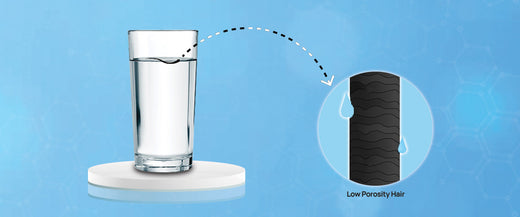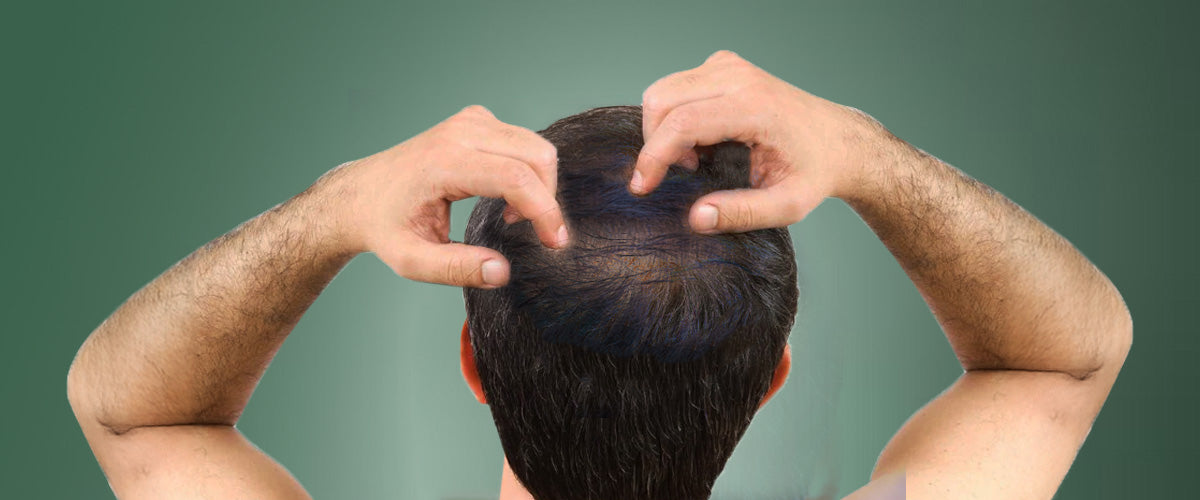Frontal Fibrosing Alopecia (FFA): Symptoms, Causes and Treatment
Evidence Based
All the information in this blog post is accurate, trustworthy, scientifically based and has been written and fact-checked by our experts and doctors.
Our licensed nutritionists and dietitians are committed to being objective, unbiased and honest, presenting all sides of the argument.
This article includes scientific references in brackets, which are clickable links to research papers from reputable academic organizations.

Frontal Fibrosing Alopecia commonly known as FFA is a type of hair loss that typically impacts the front and sides of the scalp. Can also extend to parts of the body with hair. It is categorized as a scarring alopecia since it involves the destruction of hair follicles and their replacement, by tissue.
Symptoms of Frontal Fibrosing Alopecia (FFA):
- Receding Hairline: The symptom characterized by a gradual thinning of hair along the front and sides of the scalp resulting in a higher and smoother hairline.
- Loss of Eyebrows: Another indication where eyebrow hair loss can range from patchy to complete.
- Hair Loss on Body Regions: FFA may lead to hair loss in regions like eyelashes, beard, armpits, pubic area, arms and legs.
- Redness and Scaling: In early stages affected areas may exhibit redness and scaling.
Frontal Fibrosing Alopecia Occurrence in Men & Women:
Frontal Fibrosing Alopecia (FFA) predominantly affects women and individuals assigned female at birth (AFAB) although cases, in men are uncommon.
Women:
- Typically diagnosed frequently after reaching menopause usually around age 50.
- Can also manifest before menopause especially in women of African descent.
Men:
- Extremely uncommon
- Might be confused with other forms of male pattern hair loss.
While the exact reason why women are primarily impacted is not fully understood hormonal changes are thought to be a contributing factor. This could make women more susceptible, post menopause. Genetic influences may also have a role to play although ongoing research is delving into this area.
What are the Main Causes of Frontal Fibrosing Alopecia (FFA)?
Although the trigger, for FFA remains elusive researchers suspect many factors, at play:
1. Autoimmune Response:
This is one of the suspects. The immune system mistakenly attacks hair follicles while trying to combat infections leading to inflammation and eventual scarring.
FFA could be associated with lichen planopilaris, an autoimmune scalp condition. However further investigation is needed to understand this link.
2. Genetics:
Studies indicate that genetic predisposition may also contribute.
Family history and cases of FFA, in twins both lend support to this theory.
Scientists are actively searching for genes that may be associated with susceptibility to FFA.
3. Hormonal Changes:
Fluctuations in hormone levels during menopause are believed to play a role in the development of FFA.
Following menopause a decrease in estrogen levels could create conditions that make the immune system more prone to attacking hair follicles.
While predominantly affecting women hormonal changes may also be linked to instances of FFA in men.
4. Other Potential Influences:
Sun Exposure: Although not conclusively proven certain studies suggest a connection between sun exposure and FFA.
5. Medications:
Some drugs used for controlling blood pressure may rarely have associations with FFA. However additional research is necessary for confirmation.
6. Psychological Stress:
While not a direct cause stress can exacerbate the perception of hair loss and impact well being.
It's essential to bear in mind that: these factors are contributors and not definitive causes. The development of FFA likely involves an interaction, among these elements.
Research is currently underway to pinpoint the cause of Frontal Fibrosing Alopecia (FFA), with scientists exploring new potential triggers and mechanisms.
What are the Best Treatment Options for Frontal Fibrosing Alopecia (FFA)?
While there is no cure for FFA, various treatments are available to help slow down hair loss and enhance appearance:
1. Corticosteroids:
- Creams or Injections: These medications are applied directly to the area to reduce inflammation and potentially stabilize hair loss.
- Side effects: Prolonged use may lead to skin thinning necessitating monitoring by a dermatologist.
2. Minoxidil:
- Topical Solution: When applied to the scalp this medication can promote hair growth in some individuals.
- Effectiveness Limitations: Research findings on its efficacy, in treating FFA vary and results may vary among individuals.
3. Medications:
Anti Androgens (Spironolactone): Women may use these medications to regulate hormones potentially slowing down hair loss progression.5 alpha reductase inhibitors, such, as finasteride are mainly used by men to address pattern hair loss. They may be recommended off label for certain women with frontal fibrosing alopecia (FFA).
It's important to note that these medications can come with side effects so it's crucial to consult a doctor to evaluate their suitability and potential risks.
Hair Transplantation is an option for areas affected by hair loss. Healthy hair follicles are taken from areas and then transplanted into the bald spots. When considering hair transplantation it's essential to discuss factors like cost, availability and the possibility of scarring with a surgeon.
In addition to treatments other supportive measures can help maintain hair health. Protecting your scalp from sun exposure and managing stress through techniques like mindfulness and relaxation exercises can have effects on well being.
The prognosis for FFA varies among individuals and is influenced by factors such as the rate of hair loss progression and the response to treatment. Responses to treatment can vary from person, to person. Some individuals may notice a decrease, in hair loss or even some new growth while others might not observe changes.
The emotional toll of hair loss can have an impact on ones self esteem and overall emotional well being. Engaging with support groups or therapy could be beneficial in addressing these concerns.
It is important to keep in mind that early detection and treatment play a role, in slowing down the progression of hair loss. Treatment strategies should be tailored to suit the specific circumstances, severity and progression of each individual case. Setting expectations and seeking out support are important aspects of coping with Frontal Fibrosing Alopecia (FFA).
Also Read the Articles:
Disclaimer: The information provided on this page is not a substitute for professional medical advice, diagnosis, or treatment. If you have any questions or concerns about your health, please talk to a healthcare professional.

 Evidence Based
Evidence Based






Leave a comment